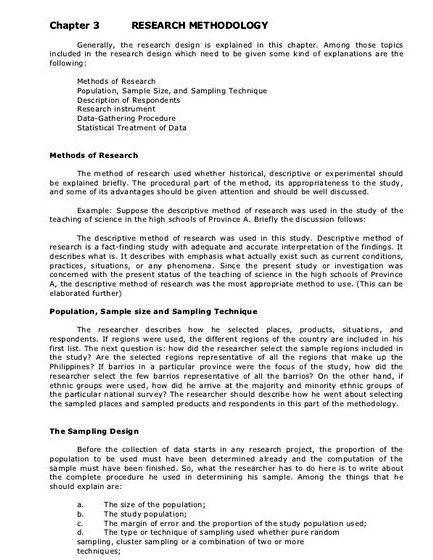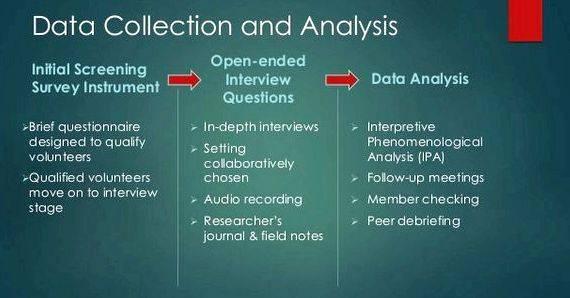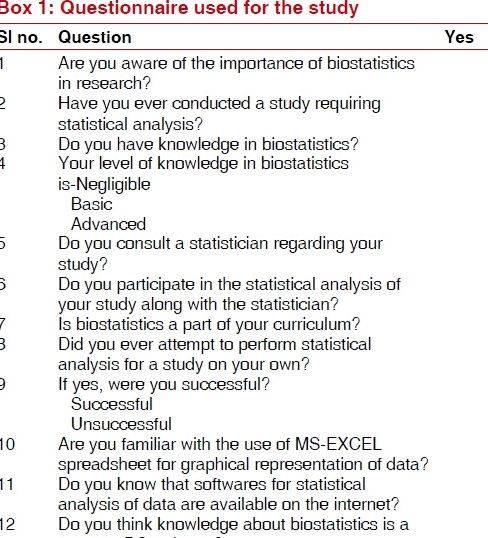

Discuss your findings
In the discussion of your findings you have an opportunity to develop the story you found in the data, making connections between the results of your analysis and existing theory and research. While the amount of discussion required in a thesis may vary according to discipline, all disciplines expect some interpretation of the findings that makes these connections.
Research question
In your discussion you must draw together your research question and your own research results. If the discussion is in a self-contained chapter or section you will need to briefly summarise the major findings that come from the research and relate them to what you originally proposed to find out. If your research is testing a hypothesis, you need to answer these questions:
- Do your research findings support your initial hypothesis? Why and how?
- Do your findings only support the hypothesis in part? Why and how?
- Do your findings disprove your hypothesis? Why and how?
- What else do your findings tell you, over and above what you initially set out to investigate?
Relation to other research
Since one of the requirements of a doctorate is to make a contribution to knowledge, it is essential to show how your results fit in with other work that has been done in your field.
- Point out the agreements and disagreements between your data and that of others.
- In presenting your own interpretation of the results, consider the strengths and weaknesses of alternative interpretations from the literature.
Implications
Another aspect of making clear the contribution of your research is to draw out the implications of your findings. Depending on the nature or your research, these will probably be related to


- current theory
- technical applications
- professional practice
Writing your discussion
The skill in writing a successful discussion is in moving backwards and forwards between others’ research and your own research, making it clear
- which has been done by other people
- which has been done by you
- and how they complement each other.
How do you differentiate your own research from previous research?
- You might use the first person to describe your findings, e.g. ‘My data shows. ‘ ;
- You might need to consistently refer to your own research as ‘This study..’ ‘The findings of this research. ‘ and referring to previous research as by name, place or time: ‘Smith and Geva found that. ‘; A previous study in Belgrade. ‘; or by reference to similarities or differences in approach or findings ‘Similar research carried out in the 1980s showed that. ‘ .
- You might need to consistently refer to your own research in the present tense and other research in the past, e.g. ‘This study shows a prevalence rate of 2.5 which is greater than that found by Smith and Geva in their Belgrade study. ‘ (Alternatively you might use the present perfect to highlight the recent relevance of your research in comparison with earlier research which would then be placed in the simple past, eg: ‘This study has shown a prevalence rate of 2.5 which is greater than that found by Smith and Geva in their Belgrade study. ‘ )
Remember that you are dealing with three different issues and the three must be clearly differentiated for the reader.

Download a printable version of this page.
Problems? Questions? Comments? Please provide us feedback.
When writing a dissertation or thesis, the results and discussion sections can be both the most interesting as well as the most challenging sections to write.
You may choose to write these sections separately, or combine them into a single chapter, depending on your university’s guidelines and your own preferences.
There are advantages to both approaches.
Writing the results and discussion as separate sections allows you to focus first on what results you obtained and set out clearly what happened in your experiments and/or investigations without worrying about their implications.
This can focus your mind on what the results actually show and help you to sort them in your head.
However, many people find it easier to combine the results with their implications as the two are closely connected.
Check your university’s requirements carefully before combining the results and discussions sections as some specify that they must be kept separate.
Results Section
The Results section should set out your key experimental results, including any statistical analysis and whether or not the results of these are significant.
You should cover any literature supporting your interpretation of significance. It does not have to include everything you did, particularly for a doctorate dissertation. However, for an undergraduate or master’s thesis, you will probably find that you need to include most of your work.
You should write your results section in the past tense: you are describing what you have done in the past.
Every result included MUST have a method set out in the methods section. Check back to make sure that you have included all the relevant methods.
Conversely, every method should also have some results given so, if you choose to exclude certain experiments from the results, make sure that you remove mention of the method as well.
If you are unsure whether to include certain results, go back to your research questions and decide whether the results are relevant to them. It doesn’t matter whether they are supportive or not, it’s about relevance. If they are relevant, you should include them.
Having decided what to include, next decide what order to use. You could choose chronological, which should follow the methods, or in order from most to least important in the answering of your research questions, or by research question and/or hypothesis.
You also need to consider how best to present your results: tables, figures, graphs, or text. Try to use a variety of different methods of presentation, and consider your reader: 20 pages of dense tables are hard to understand, as are five pages of graphs, but a single table and well-chosen graph that illustrate your overall findings will make things much clearer.
Make sure that each table and figure has a number and a title. Number tables and figures in separate lists, but consecutively by the order in which you mention them in the text. If you have more than about two or three, it’s often helpful to provide lists of tables and figures alongside the table of contents at the start of your dissertation.
Summarise your results in the text, drawing on the figures and tables to illustrate your points.
The text and figures should be complementary, not repeat the same information. You should refer to every table or figure in the text. Any that you don’t feel the need to refer to can safely be moved to an appendix, or even removed.
Make sure that you including information about the size and direction of any changes, including percentage change if appropriate. Statistical tests should include details of p values or confidence intervals and limits.
While you don’t need to include all your primary evidence in this section, you should as a matter of good practice make it available in an appendix, to which you should refer at the relevant point.
Details of all the interview participants can be found in Appendix A, with transcripts of each interview in Appendix B.
You will, almost inevitably, find that you need to include some slight discussion of your results during this section. This discussion should evaluate the quality of the results and their reliability, but not stray too far into discussion of how far your results support your hypothesis and/or answer your research questions, as that is for the discussion section.
See our pages: Analysing Qualitative Data and Simple Statistical Analysis for more information on analysing your results.
Discussion Section
This section has four purposes, it should:
- Interpret and explain your results
The discussion section therefore needs to review your findings in the context of the literature and the existing knowledge about the subject.
You also need to demonstrate that you understand the limitations of your research and the implications of your findings for policy and practice. This section should be written in the present tense.
The Discussion section needs to follow from your results and relate back to your literature review. Make sure that everything you discuss is covered in the results section.
Some universities require a separate section on recommendations for policy and practice and/or for future research, while others allow you to include this in your discussion, so check the guidelines carefully.
Starting the Task
Most people are likely to write this section best by preparing an outline, setting out the broad thrust of the argument, and how your results support it.
You may find techniques like mind mapping are helpful in making a first outline; check out our page: Creative Thinking for some ideas about how to think through your ideas. You should start by referring back to your research questions, discuss your results, then set them into the context of the literature, and then into broader theory.
This is likely to be one of the longest sections of your dissertation, and it’s a good idea to break it down into chunks with sub-headings to help your reader to navigate through the detail.
Fleshing Out the Detail
Once you have your outline in front of you, you can start to map out how your results fit into the outline.
This will help you to see whether your results are over-focused in one area, which is why writing up your research as you go along can be a helpful process. For each theme or area, you should discuss how the results help to answer your research question, and whether the results are consistent with your expectations and the literature.
The Importance of Understanding Differences
If your results are controversial and/or unexpected, you should set them fully in context and explain why you think that you obtained them.
Your explanations may include issues such as a non-representative sample for convenience purposes, a response rate skewed towards those with a particular experience, or your own involvement as a participant for sociological research.
You do not need to be apologetic about these, because you made a choice about them, which you should have justified in the methodology section. However, you do need to evaluate your own results against others’ findings, especially if they are different. A full understanding of the limitations of your research is part of a good discussion section.
At this stage, you may want to revisit your literature review, unless you submitted it as a separate submission earlier, and revise it to draw out those studies which have proven more relevant.
Conclude by summarising the implications of your findings in brief, and explain why they are important for researchers and in practice, and provide some suggestions for further work.
You may also wish to make some recommendations for practice. As before, this may be a separate section, or included in your discussion.
Conclusion
The results and discussion, including conclusion and recommendations, are probably the most substantial sections of your dissertation. Once completed, you can begin to relax slightly: you are on to the last stages of writing!
Previous answers to this question
This is a preview of an assignment submitted on our website by a student. If you need help with this question or any assignment help, click on the order button below and get started. We guarantee authentic, quality, 100% plagiarism free work or your money back.
 Get The Answer
Get The Answer